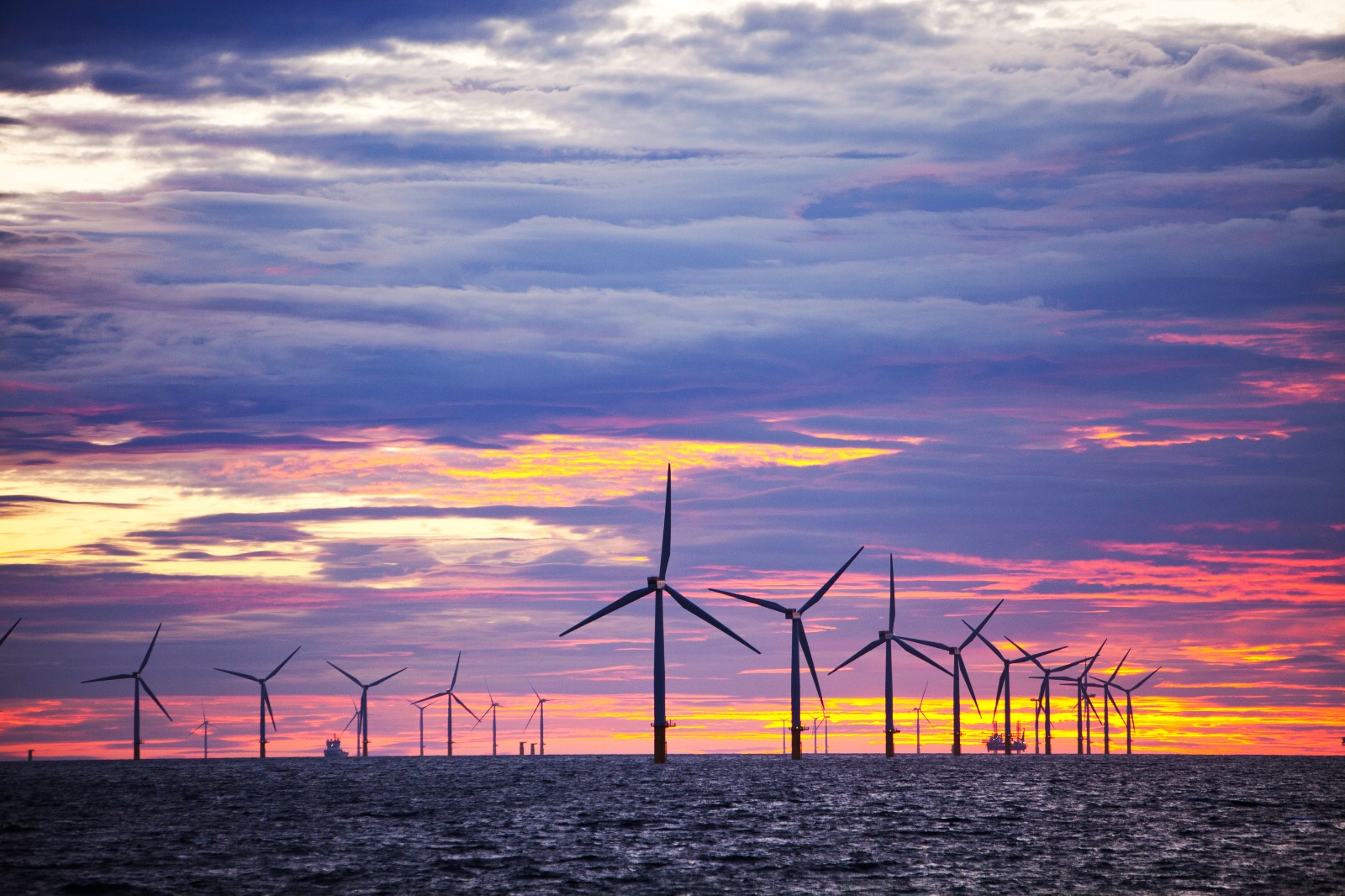From coal mines to the new green economy: how energy independence has created security in Europe
The 3rd and final article in the series shows how the United Kingdom and Norway have experienced a change in the energy sector in an attempt to reduce their greenhouse gas emissions. Professor Joe Howe of the University of Lincoln in England commented on the current scenario of energy transitions in one of the world's wealthiest nations. Furthermore, Norway's Minister of Energy, Terje Aasland, believes in societal participation and international cooperation to bring about change.

Unlike markets such as Latin America, the European energy market is much older. In some countries, professionals grew up listening to the stories of their great-grandfathers, grandfathers, and fathers working in the area. Workers who follow this family tradition are part of an important slice of skilled labor that contributes to moving the local economy. Therefore, one of the concerns reported by the interviewees is the maintenance of jobs in a very well-structured energy production chain.
From coal mines to offshore wind energy
The United Kingdom is one of the most developed economies in the world, where money is not an issue, and it is a member of the G20. How is the necessary transition from using fossil fuels to renewable and clean sources being envisaged in the land of Scottish philosopher and economist Adam Smith?
According to World Bank data from 2023, the United Kingdom comprises England, Scotland, Northern Ireland, and Wales, which together house 68 million people. The territory has about 244,000 square km and a temperate climate in which most of the year is a cold and rainy place, a well-known feature that has been the subject of poems and songs such as “A foggy day, in London town…”. However, when it comes to the energy mix, the art that best helps to understand this influential nation that has developed into a set of islands is literature.
Those familiar with the classics of 18th- and 19th-century English literature are familiar with characters who make their families' livelihoods from the coal mines. Through the characters' lives, it is clear how the First Industrial Revolution impacted the daily lives of peasants, especially when the coal used to heat homes became the main source of energy in the country, thus enabling the industrialization of England. The impacts on society at the time and on the environment were significant.
“I think oil and gas seem to be reaching the end of their useful life. In the United Kingdom, the focus in the next five years, until 2030, is not to have hydrocarbons generating energy; renewables will generate everything. So, hydrogen, for example, can boost 10 to 15% of our energy generation, "he said.
Historically, the energy mix of the United Kingdom was mainly based on this natural resource that existed in abundance on the island. It is known that people have used coal since the arrival of the Romans at the beginning of the 1st century. From 1698 onwards, the development of the steam engine, which made it possible to drain the water from the constant flooding that took place in the mines, continued the exploitation of richer underground layers. Almost two centuries later, coal used as fuel for steam engines and other types of engines represented more than 90% of the energy source used in England in the second half of the nineteenth century, according to the book Energy and the English Industrial Revolution by E. A. Wrigley.
However, the scenario has changed a lot since then. According to the Ember think tank study , last year, 60% of the UK's electricity was generated from clean sources, with wind and solar accounting for 33% combined. The country still relies on gas for 34% of its electricity production, but coal generation was about 30 times lower than in 2013, accounting for only 1.4% of the UK's electricity mix.
The expansion of renewable energy was the engine of this collapse and the last coal plant was shut down in Ratcliffe-on-Soar, in the city of Nottingham, in September of this year. This is a historic milestone, as Thomas Edison built the world's first coal-fired power plant in London in 1882. From the end of the 19th century to the first half of the 20th century, coal provided virtually all of the electricity used to light up homes and businesses in the UK. In addition to being an important step for the country's energy transition and sustainability, coal is a more polluting fossil fuel, emitting a huge amount of greenhouse gases when burned.
Britain aims to achieve 87% renewable electricity by 2030, while the International Energy Agency's (IEA) Net Zero Emissions scenario sets a global target of 60% renewable electricity by 2030.
Professor Joe Howe of the University of Lincoln in England has a background in environmental engineering, geography, and planning. In addition to teaching, he works with industry on major environmental projects and initiatives across the UK. Joe is well involved with the topic of clean growth in the UK. During the interview, he was excited to talk to the G20 Brasil team and optimistic about the future. For him, the country is increasingly adopting the use of renewable energies such as wind, solar, and biomass, including, in his view, the possibility of building a green corridor between Brasil and the United Kingdom for biomass exports and imports.
According to the professor, specific laws on energy transition are in force in the United Kingdom, and over time, penalties associated with hydrocarbon emissions will increase.
“I think oil and gas seem to be reaching the end of their useful life. In the United Kingdom, the focus in the next five years, until 2030, is not to have hydrocarbons generating energy; renewables will generate everything. So, hydrogen, for example, can boost 10 to 15% of our energy generation, "he said.
A debate and government agencies are being created to think about jobs in the clean energy sector. There is also much discussion at the moment about reforming the entire land use planning system to facilitate biomass, solar, and wind power plants and turn the UK into a clean energy superpower. He believes that over time, the current high costs of transitioning will be leveled by the tax system, with tax incentives for the green industry, and by the market itself.
“Let me give you an example: When offshore wind started in the UK, it was very expensive. Now, the costs are as low as the energy generated by oil and gas. As soon as there is a functioning market, with products developing, consumers wanting green products, services generated with clean energy, then the cost decreases, and we get used to producing cheaper things.”

As with offshore wind energy, which is generated in offshore wind farms that turn intense winds into electricity, over time the costs of new energy sources, such as hydrogen, will decrease and eventually fall below the cost of hydrocarbons. Especially as the world moves more and more toward taxing carbon emissions, the current climate emergency will force politicians, academics, and industry to dialogue with each other and seek solutions, Professor Joe Howe believes.
He was pleased that the G20 meeting will occur in Latin America this year. "Brasil is a power in South America, and the G20 is taking place in a country of great economic and ecological potential. The G20 meeting complements the G7, in which many countries have already discussed green growth. Brasil now has the world's ecological granary in its hands, and I am excited to set some agendas through the G20. I think it is absolutely essential for the planet. ”
Living in the Far North of Europe
Not far from the United Kingdom, another nation has been rethinking how it produces energy. Norway, a G20 guest country, is located on the Scandinavian Peninsula in the far north of Europe. It covers an area of about 365,000 square kilometers and has great potential for natural resources. According to World Bank data (2023), 5.5 million people live in the country, which has a climate with long winters and is home to the natural phenomenon of the aurora borealis.
Norway's Minister of Energy, Terje Aasland, gave an exclusive interview on the G20 Brasil website in which he discussed his country's history and energy mix. According to Mr. Aasland, Norway was among the poorest countries on the European continent 124 years ago. However, today, it has a developed hydroelectric system and good energy production capacity using renewable sources. For example, today, close to 90% of the cars sold in the country are electric.

Following the spirit of Scandinavian countries, where the tax burden is higher than in other countries, and precisely to return benefits to the average citizen, the minister believes that natural resources belong to the nation's people. “Natural resources belong to people, it is really important that part of the income generated from these natural riches should go to people in the community to build well-being. And so, we grew from a poor country in 1900 to a wealthy one in 2024. This was possible because we deal with natural resources as part of the public property we provide through the government. ”
Mr. Aasland says that the hydroelectric system used to start industrialization in the country was first developed, and before starting the construction of the system, they even discussed who owned the waterfalls. Then, in 1969, oil and gas were discovered on the Norwegian continental shelf in the North Sea, and for the past twenty years, the country has been focusing on decarbonizing the oil industry. Companies in the industry pay high tax rates so that the value created with this resource returns to the population and thus can bring well-being to society.
The country has also invested in carbon capture and storage, a technique for artificially separating carbon dioxide (CO2) released in burning fossil fuels in steel mills, fertilizer plants, or cement from other gases before it reaches the atmosphere. After capture, the compound is compressed into a liquid and is transported for proper storage in geological formation on its continental shelf. It is an expensive procedure, so it is economically more interesting in countries with a carbon market with high prices, such as Europe.
“We now have the value chain developed for carbon capture and storage. It is one of the leading technologies to tackle emissions, especially in sectors of difficult abatement. We will capture CO2 from a cement plant in my home region of Telemark in May of next year. We have also granted ten licenses to store CO2 on our continental shelf, ”said the minister.
According to Minister Terje Aasland, Norway supports Brasil's G20 presidency and the goals that were established in the Energy Transitions Working Group. He believes the two countries have common interests and great potential to produce renewable energy. In addition to the fact that no country is an island, he defends the cooperation and support of each country's society.
“I will say one more thing that I think is very important: when you are talking about energy transitions, we have to bring people with us so that we can win. We can only do this with public support, so we must ensure that change happens with jobs being saved to create more solidarity in a global perspective.”
Translated by PGET-UFSC